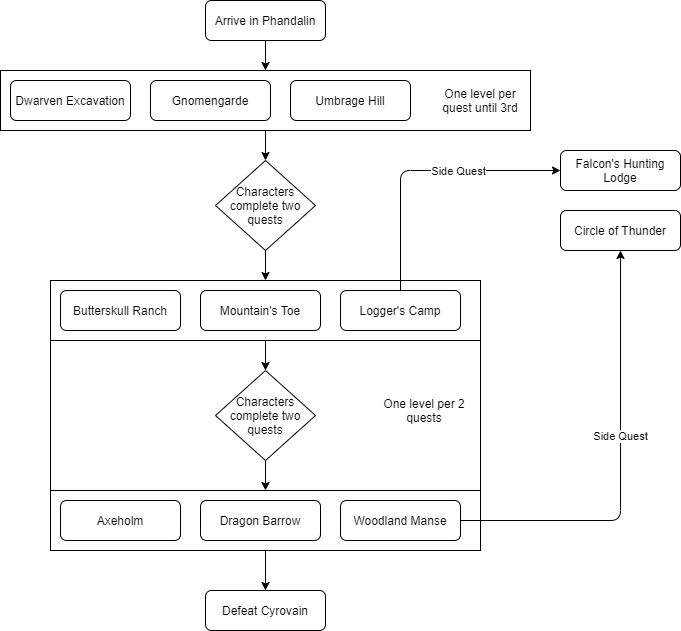That’s the railroad part. You get to chose from three quests, but you will chose from those three quests. This isn’t the kind of game where you say “instead we’ll go to the next town over and recruit their militia.” (Like, say, the Stars Without Number game I’d mentioned above.) It’s a game where you say “you chose between these three paths – which you do, in which order, and if you are able to complete them or have to abandon them.”
The control technique is purely open and transparent. You chose quests from the quest board. You don’t not chose quests from the quest board. It’s a game conceit, but perfectly functional at doing a “heroes get quests and complete them” D&D style game. (If you know the old lingo, it’s participationism vs illusionism.)
Inside the quests, players (usually) can apply their creativity. Once they’re on the dungeon map, they chose how they explore (or not), who they talk to (or not), who they fight (or not). And their tactics and the dice decide if they’re successful or not. If they lose a fight, they lose a fight. They may or may not still be able to complete the quest. They may or may not be one or all dead. If they’re dead, player makes a new character who shows up to also be a hero and save the village.
The thing that didn’t happen, but that I could see being a problem for this setup, is if the players fail at two or three of the three quests. There is no provision in the game (that I can remember) for what to do if they just fuck it all up. The game does assume that they’ll succeed at at least some of the quests. Eventually. Maybe after all the original heroes have died.
There was one funny moment where they thought about killing the mayor of the town for being a coward. But I didn’t have to do anything to stop them, as they remembered that their Paladin was sworn to defend the town and couldn’t, by oath, murder him. Had they gone ahead with that I might have had to adapt or to tell them to stick to the path. But it didn’t come up, so I didn’t have to make the judgement call.
As for player creativity: I never had to reorient at a scenario level. The players accepted that they needed to take quests and save the village. I’d told them straight up before we started playing that was how the game worked, and so they played the way the game worked. In each of the quests I frequently had to figure out how to deal with the zany shit they came up with. Using spells in weird ways, trying to negotiate with manticores, bribing the dwarves who were bribing them using the dwarves own gold… all fun stuff.
So, maybe the easiest way to say it is that in this style of play the place where primary PC creativity and agency manifests is at the tactical level, while the strategic level is pretty set.
